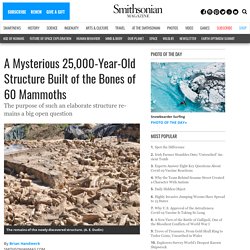

X-rays reveal secrets of 14th-century tomb of England’s infamous Black Prince. Ancestors by Alice Roberts review – a story of movement and migration. In 2002, not far from Amesbury in southern Wiltshire and a mile or so from Stonehenge, archaeologists were investigating the site of a new school when they discovered something remarkable.

It was the grave of a man, aged between 35 and 45, who died more than 4,000 years ago. Wessex Archaeology conducted the excavation and they labelled his remains as “skeleton 1291”. But to the public he soon became known as the Amesbury Archer. Among his bones were no fewer than 18 beautifully crafted flint arrowheads. The shafts had long since rotted away, along with the bow. Indeed the grave itself contained nearly a hundred items – including copper knives, gold objects, boars’ tusks and a shale ring – making it the most richly furnished grave from the period that had ever been discovered in Britain.
The Amesbury Archer is preserved in Salisbury Museum and, according to Roberts, “our visits to museums, to gaze on such human remains, are a form of ancestor worship”. Underwater archaeology team finds ancient obsidian flakes 2,000 miles from quarry. (the “Website”), is operated by HERITAGEDAILY What are cookies?

Cookies are small text files that are stored in the web browser that allows HERITAGEDAILY or a third party to recognise you. Cookies can be used to collect, store and share bits of information about your activities across websites, including on the HERITAGEDAILY website and subsidiary brand website. Cookies can be used for the following purposes: – To enable certain functions – To provide analytics – To store your preferences. 25,000-Year-Old Building Made of 60 Mammoths. A jaw-dropping example of Ice Age architecture has been unearthed on Russia’s forest steppe: a huge, circular structure built with the bones of at least 60 woolly mammoths.

But exactly why hunter-gatherers enduring the frigid realities of life 25,000 years ago would construct the 40-foot diameter building is a fascinating question. “Clearly a lot of time and effort went into building this structure so it was obviously important to the people that made it for some reason,” says Alexander Pryor, an archaeologist at the University of Exeter (U.K.). He is the lead author of a new study published this week in the journal Antiquity describing the find at Kostenki, a place where many important Paleolithic sites lie clustered around the Don River. The ancient builders did leave some clues. Fires once burned within the structure and food scraps, including vegetables, remain.
Irish Farmer Stumbles Onto 'Untouched' Ancient Tomb. A farmer conducting routine land improvement work recently uncovered an “untouched” ancient tomb on the Dingle Peninsula, a stretch of land on Ireland’s southwest coast.

As Seán Mac an tSíthigh reports for Irish broadcaster RTÉ, the County Kerry resident stumbled onto the structure after turning over a rock and spotting a stone-lined passageway beneath it. When archaeologists from the National Monuments Service (NMS) and the National Museum of Ireland surveyed the chamber, they determined that it probably dates to between 2000 B.C. and 500 B.C. but could be even older. “Given its location, orientation and the existence of the large slab your initial thought is this is a Bronze Age tomb,” archaeologist Mícheál Ó Coileáin tells RTÉ. “But the design of this particular tomb is not like any of the other Bronze Age burial sites we have here.” The tomb consists of a large space with a smaller adjoining chamber, writes Ronan McGreevy for the Irish Times.
Monte Testaccio: A Literal Mountain of Ancient Roman Trash - Tales of Times Forgotten. A lot of people nowadays are talking about how plastic takes thousands of years to decompose and our landfills will therefore still be full of plastic thousands of years from now.

It is, however, important to note that massive landfills filled with waste that takes thousands of years to decompose is not an exclusively modern problem. People in the ancient world commonly used ceramics for storing, transporting, cooking, and eating. Like plastic, ceramic takes many thousands of years to decompose. As a result, pieces of ceramic dating back thousands of years are present at pretty much any ancient site.
Dead Sea scroll fragments and 'world's oldest basket' found in desert cave. Israeli archaeologists have unearthed two dozen Dead Sea scroll fragments from a remote cave in the Judean Desert, the first discovery of such Jewish religious texts in more than half a century.

“For the first time in approximately 60 years, archaeological excavations have uncovered fragments of a biblical scroll,” the Israel Antiquities Authority (IAA) said in a statement. Exploring the Avebury Stone Circle Landscape. The landscape of the Avebury Stone Circle is a World Heritage Site, located in the county of Wiltshire, England.

The area was designated part of the Stonehenge, Avebury and Associated Sites by UNESCO in 1986, in recognition for one of the most architecturally sophisticated stone circles in the world, in addition to the rich Neolithic, and Bronze age remains, such as the West Kennet Avenue, Beckhampton Avenue, West Kennet Long Barrow, the Sanctuary, and Windmill Hill. The Avebury Stone Circle Landscape – To View Full Map – Click Here Avebury Stone Circle. Archaeologists Reveal Roman Ceremonial Chariot. Archaeologists from the Archaeological Park of Pompeii, and the Public Prosecutor’s Office of Torre Annunziata have announced the discovery of an intact Roman Ceremonial Chariot excavated near the Roman city of Pompeii.

Pompeii, a UNESCO World Heritage Site, was a Roman city located in the modern commune of Pompei near Naples in the Campania region of Italy. At its peak, Pompeii had a population of around 20,000 inhabitants and became an important passage for goods that arrived by sea, to be sent toward Rome or southern Italy along the nearby Appian Way. Scientific Study of Believed Remains of Apostles. In Rome lies the Santi Apostoli church, cared for by Franciscan brothers for more than 500 years.

For more than 1500 years, this site has held the believed remains of two of the earliest Christians and Jesu apostles: St. Philip and St. The Vainakh Towers. Across the North Caucasus of Eastern Europe, are structures built in the characteristics of Vainakh tower architecture for defensive or domestic use, that were constructed by the Nakh peoples in Chechnya, the Republic of Ingushetia, and north-eastern Georgia.

“Nakh” was coined in the Soviet period to accommodate the wider linguistic family of Vainakh languages, which were spoken by groups of ethnic Chechen, Ingush and Kist peoples. The oldest examples of Vainakh tower architecture dates from the 1st century AD, with the most active period of tower construction dating from the 15th–17th century AD. Domestic towers were usually built on a square or rectangular base, with tapering walls that rose up to four floors in height.
The upper stories were generally used for habitation, whilst the lower levels were intended for livestock and grain storage. Towers were traditionally built in a period lasting no more than 365 days, with every well-to-do family in a community obliged to construct one. Two stones fuel debate over when America’s first settlers arrived. Scientific debate about the most controversial archaeological site in the Americas has entered rocky new territory. In 2017, scientists reported that around 130,000 years ago, an unidentified Homo species used stone tools to break apart a mastodon’s bones near what is now San Diego. If true, that would mean that humans or one of our close evolutionary relatives reached the Americas at least 100,000 years earlier than previously thought, dramatically reshaping scientists’ understanding of when the region was settled (SN: 4/26/17). Critics have questioned whether the unearthed stones were actually used as tools. And other researchers suggested that supposed tool marks on the bones could have been created as the bones were carried by fast-moving streams or caused by construction activity that partially exposed the California site before its excavation in 1992 and 1993.
Sign Up For the Latest from Science News Headlines and summaries of the latest Science News articles, delivered to your inbox. Spectacular Ice Age Rock Paintings Found In Colombian Rainforest. Save Get the latest Waking Times articles delivered to your inbox. Sign up here. Deutsche Welle, EcoWatch Waking Times. World's oldest known cave painting found in Indonesia. Archaeologists have discovered the world's oldest known cave painting: a life-sized picture of a wild pig that was made at least 45,500 years ago in Indonesia.
The finding described in the journal Science Advances on Wednesday provides the earliest evidence of human settlement of the region. Co-author Maxime Aubert of Australia's Griffith University told AFP it was found on the island of Sulawesi in 2017 by doctoral student Basran Burhan, as part of surveys the team was carrying out with Indonesian authorities. The Leang Tedongnge cave is located in a remote valley enclosed by sheer limestone cliffs, about an hour's walk from the nearest road. Vallum Aulium - Hadrian’s Wall. Hadrian’s Wall (Vallum Aulium) was a defensive fortification in Roman Britannia that ran 73 miles (116km) from Mais at the Solway Firth on the Irish Sea to the banks of the River Tyne at Segedunum at Wallsend in the North Sea. The purpose of the walls construction varies, some theories by archaeologists suggest that it was an expression of Rome’s power to solidify Hadrian’s policy of defence.
On Hadrian’s accession to the throne in AD 117, there was unrest in parts of the Empire, including Judea, Libya, Egypt, and Mauretania which may have persuaded Hadrian to strengthen frontier borders. Whether this would have deterred a threat from the northern tribes invading from Caledonia is unknown, parts of Caledonia had previously been annexed with the construction of the Gask Ridge around AD 70-80 and in AD 84, an army of 30,000 Caledonian warriors faced off against a 20,000 strong Roman invasion force led by General Gnaeus Julius Agricola at the Battle of Mons Graupius.
Mais – Hadrian’s Wall. Have Archaeologists Found History's Deadliest Dance Floor? Roman toilets may actually have been bad for public health. At its zenith, the Roman Empire spanned three continents, encircled the Mediterranean, and was home to one-fifth of the planet’s population. The Romans brought roads, bridges, and, perhaps most importantly, sanitation. Did Our Early Ancestors Boil Their Food in Hot Springs? 'Astonishing' giant circle of pits found at Stonehenge. • A 1.2 mile (2km) wide circle of large shafts was found, measuring over 10 meters wide and 5 meters deep. Archaeologists Discover Giant Defensive Minefield From Roman Iron Age. An Archaeological Explanation for the Story of Noah's Ark. The Biblical story of Noah's Ark is widely known: God decides to wipe the Earth clean of wickedness and tasks the righteous Noah and his family to safeguard themselves along with all the world's animals inside a gigantic wooden ark in order to ride out a global 150-day flood.
Though some take the story literally, there's no archaeological evidence that such an ark ever existed, nor is there any geologic evidence of a cataclysmic global flood. Itsy-Bitsy Indonesian Rocks Are Rewriting the History of Ancient Art. 10 Historic UK Stone Circles. This gnarled pile of fossils was once a giant structure—made of Ice Age mammoths. Some 25,000 years ago, a circular wall of bone and ivory rose like a macabre mirage from a snowbound plain 500 kilometers south of present-day Moscow.
‘Astounding new finds’ suggest ancient empire may be hiding in plain sight. SAN JUAN TEOTIHUACAN, MEXICO—On 16 January 378 C.E., a stranger arrived in Tikal, a large Maya city in what is now northern Guatemala. Misliya Cave Project. Mount Carmel, Israel. Found: A Stash of Mystical Charms and Amulets in Pompeii. When Mount Vesuvius exploded nearly 2,000 years ago, the residents of Pompeii and Herculaneum were directly in its path. Mysterious new objects found at Pompeii. Water Pipeline Workers Stumble Across Dozens of Iron Age Skeletons.
Human history through tree rings: Trees in Amazonia reveal pre-colonial human disturbance. The Day the Dinosaurs Died. What Poop Can Teach Us About an Ancient City's Downfall. 'Revealing Greater Cahokia' details research on ancient North American metropolis. What happened 4,000 years ago in the Urals? Georadar detects a Viking ship in Norway. Team finds oldest weapons ever discovered in North America. Shipwreck found in Black Sea is 'world's oldest intact' Archaeologists identify ancient North American mounds using new image analysis technique - HeritageDaily - Archaeology News. View Release - Division of Historical Resources. Ancient Native American Burial Site Discovered Off the Coast of Florida. 3,800-Year-Old 'Tableau' of Egyptian Boats Discovered. An Ancient Hyena May Have Chomped Down on This Neanderthal's Face.
English mass grave contains remains of Viking Great Army. Unique Viking runes discovered in Denmark. 1,000-Year-Old Stone Structure in Mexico May Depict Creation of Earth. Amateur Archaeologists Find ‘Most Exciting’ Roman Mosaic in Britain. How the Folsom Point Became an Archaeological Icon - The Crux. 3,500-Year-Old 'Lunch Box' with Traces of Grain Found in Swiss Alps. Casting light on the dark ages: Anglo-Saxon fenland is re-imagined - HeritageDaily - Heritage & Archaeology News. Australia human history 'rewritten by rock find' Rusty rivets reveal origin of Icelandic viking ships. A Bronze Age grape shakes up history. Naracoorte, where half a million years of biodiversity and climate history are trapped in caves – HeritageDaily.
3D-modelling shows food residues in 230 million year old fossil faeces – HeritageDaily. Traces of some of South America’s earliest people found under ancient dirt pyramid. Satellite Images May Hold Answers to Peru’s Nazca Lines Mystery. Ramses II Found Under Cairo Slum - Egyptian Pharaoh Discovery. Uncovered after 2,000 years: gold torcs fit for an Iron Age queen – HeritageDaily. World's Oldest Fossils Possibly Uncovered in Canada. MOLA excavations at Crossrail Farringdon site reveal secrets of Tudor Life – HeritageDaily.
Radiocarbon dating and DNA show ancient Puebloan leadership in the maternal line – HeritageDaily. 400 million year old gigantic extinct monster worm discovered in Canadian museum – HeritageDaily. ‘Brutally murdered’ Pictish man brought back to life by CAHID team – HeritageDaily. Did Stone Age people build a large labyrinth in Denmark? New Dead Sea Scrolls cave discovered. Dinosaurs: Juvenile, adult or senior? – HeritageDaily. What Happened to the Sun over 7,000 Years Ago? Analysis of tree rings reveals highly abnormal solar activity in the mid-Holocene – HeritageDaily. Mysterious Amazonian Geoglyphs Were Built in Already-Altered Forests. LiDAR Scans Reveal Maya Civilization's Sophisticated Network of Roads. Ancient figures reveal trading routes of prehistoric African civilisation – HeritageDaily.
Climate change drove population decline in New World before Europeans arrived – HeritageDaily. Preserved in Time: Origins of a very British obsession with condiments discovered by MOLA at Crossrail site – HeritageDaily. In Photos: Exploring the Mysterious Plain of Jars Site. The discovery of medieval Trellech and the plucky amateurs of archaeology – HeritageDaily. Ancient Chaco Canyon population likely relied on imported food, finds CU study – HeritageDaily. Finding North America’s lost medieval city. Jaw on the Floor: Entire Chunk of Feathered Dinosaur Discovered in Amber - Scientific American Blog Network. The First Americans Didn't Arrive by the Bering Land Bridge, Study Says. The Dirty Secret About Ancient Bathrooms. Centuries of Preserved Shipwrecks Found in the Black Sea. 133-Million-Year-Old Pebble Discovered to Be First Fossilized Dinosaur Brain. Reconstruction of 12,000 year old funeral feast brings ancient burial rituals to life – HeritageDaily.
Did you know? In Buckinghamshire, England is a network of tunnels that important 18th century aristocrats met to carry out mock-pagan rituals and orgies. – HeritageDaily. Ancient Brazilians occupied the same homes for centuries – HeritageDaily. Unique Viking tomb contains remains of noble couple. Musket Balls, Fake Teeth and More Found Beneath Malcolm X's Childhood Home. A Secret Tunnel Found in Mexico May Finally Solve the Mysteries of Teotihuacán. Remarkable evidence of ancient humans found under Florida river. Future - The ancient Peruvian mystery solved from space. Roman Forts in Wales – Interactive Map – HeritageDaily. In Photos: New Clovis site in Sonora. How ancient horse-dung bacteria is helping us determine where Hannibal crossed the Alps – HeritageDaily.
Earth - Severe droughts explain the mysterious fall of the Maya. Lasers reveal ‘lost’ Roman roads. Piecing together the gruesome story of York’s headless Romans. An Ancient, Brutal Massacre May Be the Earliest Evidence of War. Butchered Mammoth Suggests Humans Lived in Siberia 45,000 Years Ago. Stone-age tools dating back 118,000 years discovered — but no sign of people who made them. Iceman’s Gut Holds Clues to Humans’ Spread into Europe. Stone Age Horror! Pit Filled with Severed Limbs Uncovered.